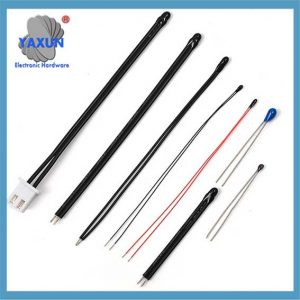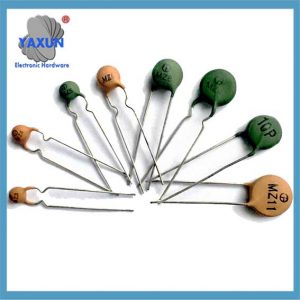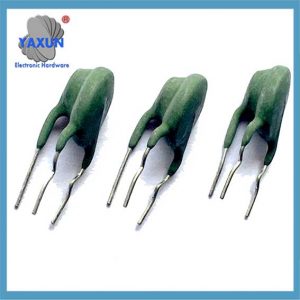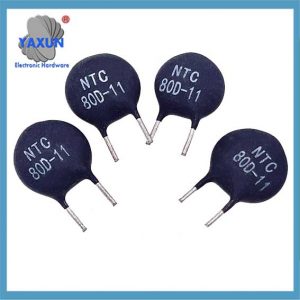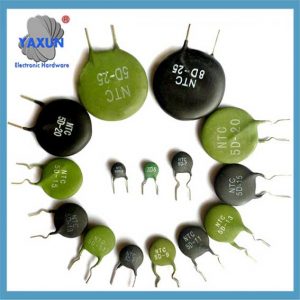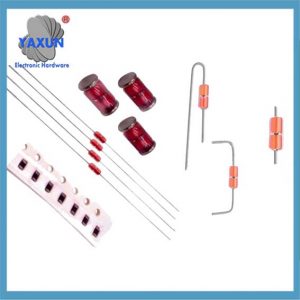Los termistores son resistencias especiales cuyo valor de resistencia cambia con la temperatura.. This type of resistor is widely used in various temperature detection, control de temperatura, thermal protection and other occasions. Understanding the basic principles of thermistors and how to judge their quality is very necessary for electronics enthusiasts or workers in related industries.
¿Qué es un termistor??
A thermistor is a resistor whose resistance value changes with temperature and is used for temperature detection, control and thermal protection. To judge whether a thermistor is good or bad, you need to check the appearance, resistance value, resistance change and response speed. When selecting and using thermistors, you need to consider the application scenarios and conditions, avoid harsh environments, and follow operating specifications.
Primero, let’s understand the basic principles of thermistors. The resistance value of a thermistor changes with temperature, which makes it a very sensitive temperature sensor. According to the characteristics of the resistance value changing with temperature, thermistors can be divided into two types: positive temperature coefficient thermistors (PTC) and negative temperature coefficient thermistors (CNT). The resistance value of a positive temperature coefficient thermistor increases with increasing temperature, while the resistance value of a negative temperature coefficient thermistor decreases with increasing temperature. This resistance change characteristic enables thermistors to play an important role in temperature measurement, control de temperatura, overheat protection and other fields.
Entonces, how to judge the quality of a thermistor? We can judge it from the following aspects:
1. Check the appearance of the thermistor. A good thermistor should have a neat appearance, no damage, and no oxidation on the pins. If the thermistor is found to have damage or oxidation on the pins, it is likely that it has been damaged or aged.
2. Use a multimeter to detect the resistance of the thermistor. At room temperature, the resistance of the thermistor detected by a multimeter should be consistent with the nominal value. If the resistance is too large or too small, it is likely that the thermistor is damaged or has poor performance.
3. Detect the change in the resistance of the thermistor by heating. For a negative temperature coefficient thermistor (CNT), its resistance should decrease when the temperature rises. For positive temperature coefficient thermistors (PTCs), their resistance should increase when the temperature rises. If the resistance change of the thermistor does not conform to this rule during the heating process, it is likely that the thermistor is damaged or has poor performance.
4. Check the response speed of the thermistor. A good thermistor should have a fast response speed, eso es, when the temperature changes, its resistance can react quickly. If the thermistor responds too slowly, it may be that its performance is poor or aging.
En resumen, judging the quality of thermistors requires comprehensive consideration of appearance, resistencia, resistance change, and response speed. For different types of thermistors, the judgment method is also different. En aplicaciones reales, También necesitamos seleccionar el tipo y el modelo de termistor apropiados de acuerdo con los escenarios y requisitos específicos de la aplicación para garantizar su funcionamiento normal y estabilidad a largo plazo..
Además, También debemos prestar atención al entorno de uso y las condiciones del termistor. Por ejemplo, Los termistores deben evitar ser utilizados en entornos hostiles, como la alta temperatura., alta humedad, y fuertes campos magnéticos para evitar afectar su rendimiento y estabilidad. Al mismo tiempo, Al instalar y usar termistores, También debemos seguir las especificaciones operativas y los requisitos de seguridad relevantes para garantizar que funcionen de manera segura y confiable..
En breve, Comprender los principios básicos de los termistores y cómo juzgar su calidad es muy importante para los entusiastas de la electrónica o los trabajadores en las industrias relacionadas. Seleccionando y usando termistores, Podemos realizar mejor funciones como la detección de temperatura, control de temperatura, y protección térmica, Proporcionar fuertes garantías para la operación segura y estable de varios dispositivos electrónicos.
 English
English العربية
العربية Български
Български 粤语
粤语 中文(简体)
中文(简体) 中文(漢字)
中文(漢字) Nederlands
Nederlands Suomi
Suomi Français
Français Deutsch
Deutsch Ελληνικά
Ελληνικά Magyar
Magyar Italiano
Italiano 日本語
日本語 한국어
한국어 Polski
Polski Português
Português Română
Română Русский
Русский Slovenščina
Slovenščina Español
Español Svenska
Svenska ภาษาไทย
ภาษาไทย Türkçe
Türkçe Tiếng Việt
Tiếng Việt

